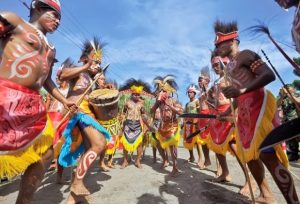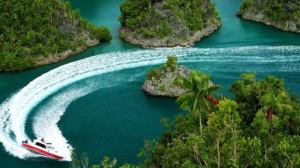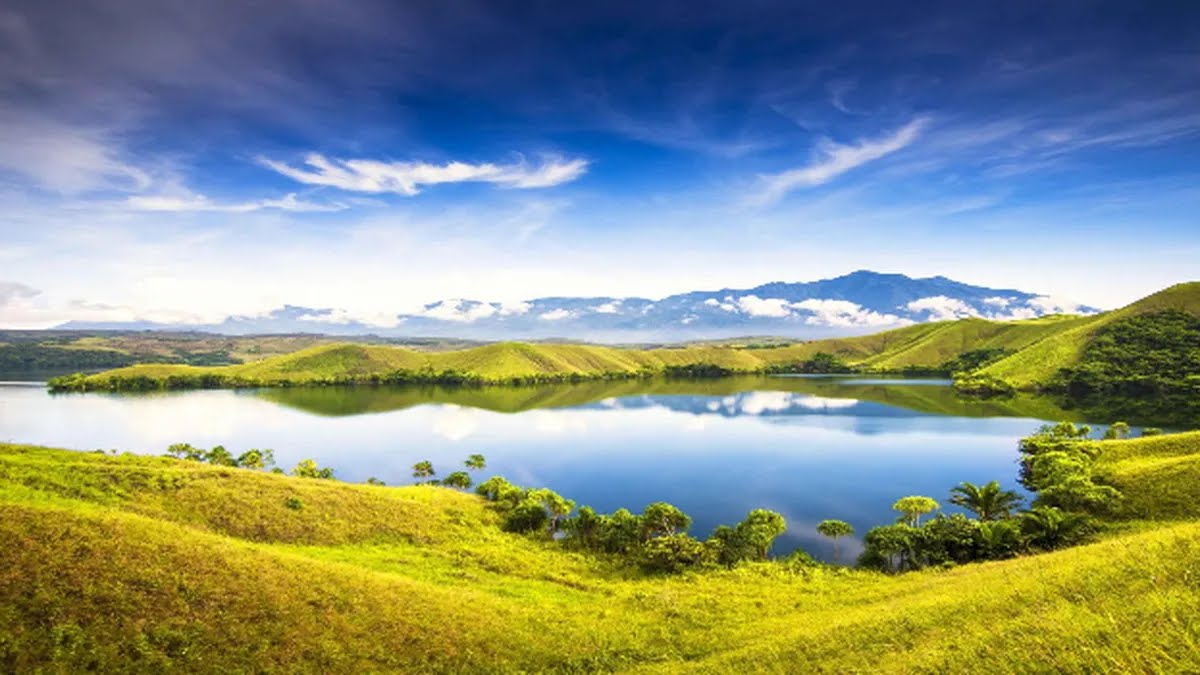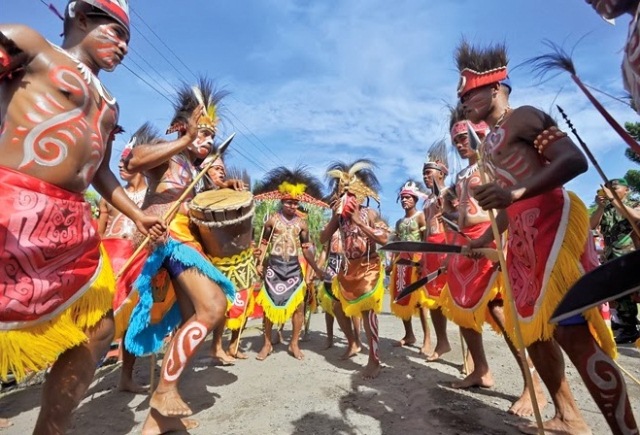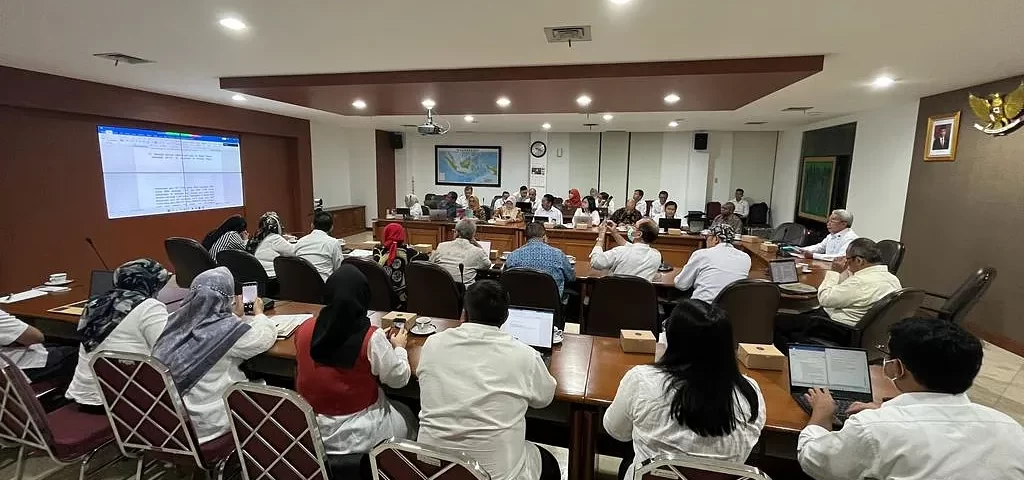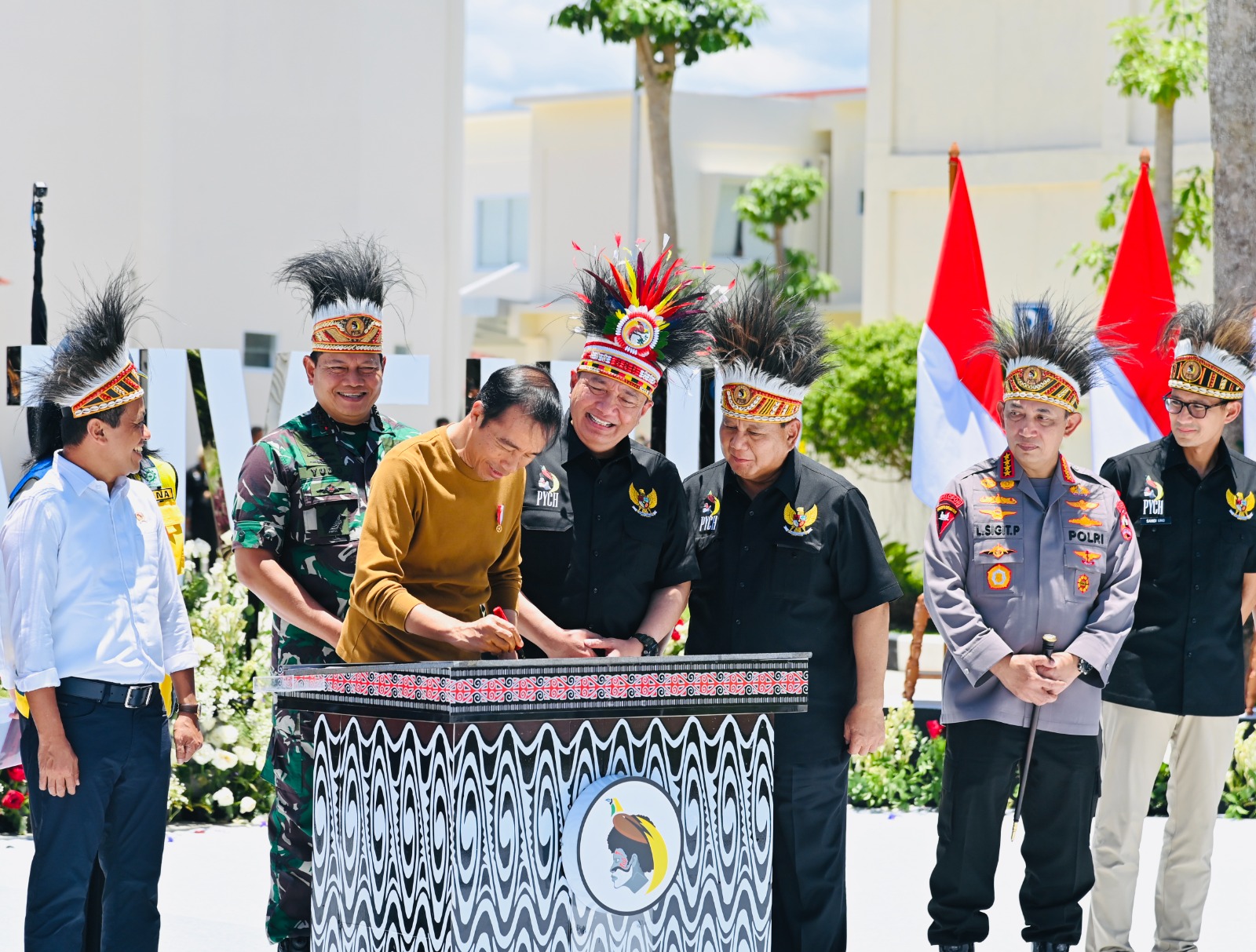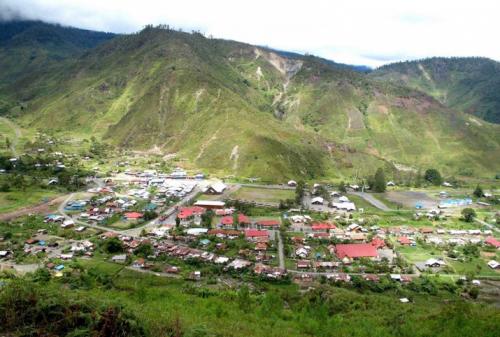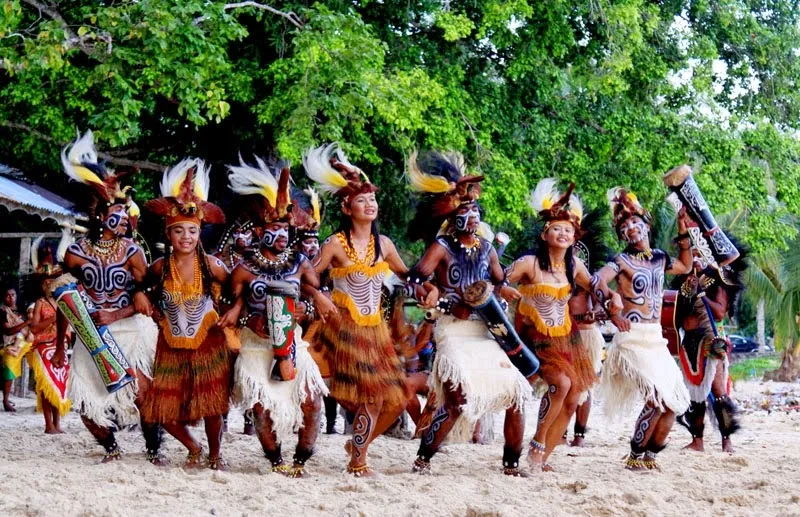
Birdquest’s Classic West Papua birding tours explore the western half of the island of New Guinea [a territory of Indonesia that used to be called Irian Jaya]. Our ultimate West Papua, Indonesia birding tour is exceptionally comprehensive and concentrates on the endemic specialities of this part of New Guinea, including its offshore islands, where marvelous creatures can be found such as the amazing Macgregor’s Honeyeater, Red and Wilson’s Birds-of –paradise, Western Parotia, Arfak Astrapia, Long-tailed Paradigalla, Masked Bowerbird, Western Crowned Pigeon and Numfor Paradise Kingfisher.
When, in the mid19th Century, Alfred Russel Wallace first approached the shores of Western New Guinea he wrote that he could barely contain his excitement knowing that ‘those dark forests produced the most extraordinary and the most beautiful of the feathered inhabitants of the earth’.
First sighted by the Portuguese in 1526, this huge island, second only in size to Greenland, exhibits incredible ecological diversity. In just 100 miles [160km] the land rises from the steamy mangroves and peat-swamp forests of the coast through impenetrable rain-and moss-forests up to the open alpine grasslands and jagged snow-capped summits of the Jayawijaya [or Snow] Mountains, the highest peaks between the Himalayas and the Andes.
The very varied local ecology and the isolating effect of the rugged terrain have resulted in a cultural and linguistic diversity unparalleled on earth. Here 0.1% of the world’s population speak 15% of the unknown languages. Early Dutch colonial influence barely extended beyond the immediate vicinity of the coast, with vast areas remaining terra incognita until the mid20th century. Most of the tribes, particularly those in the highlands, were first contacted by outsiders as recently as in the 1930s or even later, and some are still unknown to westerners. Despite the efforts of missionaries and ‘Indonesianization’ programmes, many tribes are much as they were before outside influence arrived. Stories of tribal warfare and even cannibalism are still frequent in some places, although fortunately not in the areas we will visit!
Diversity and timelessness are as characteristics of the fauna and flora of the people. West Papua [formerly known as Irian Jaya] is still covered by some of the largest tracts of undisturbed forest on earth, second only to Amazonia. Very few birdwatchers have as yet visited West Papua, before mass tourism, logging and mining have had a serious impact on the environment. Whether sampling the birds of New Guinea for the first time or returning for those exotic and rarely seen endemics, Indonesia’s West Papua provides the adventurous birder with some of the most exciting birding and travel experiences the modern world can offer.
A visit to this very remote region of Indonesia is much more of an adventure than a normal birding tour, and even after the improvements of recent years, there are still a few nights with quite basic accommodations. Tourism is still very much in its infancy in West Papua. Although reasonably comfortable hotels exist in all the main centers, once we are away from such places our accommodation will be in remote, basic villages or even [for one or two nights] in simple ‘bush shelters’ deep in the forest and well away from habitation. In addition, local agent charges for arranging adventurous ecotourism in West Papua have become very high, reflecting rapidly climbing costs in this unique part of Indonesia.
Our classic West Papua birding tour starts on the isolated island of Biak in Geelvink Bay, where the Old Dutch colonial capital, Bosnik, was located. Much of the original forest which once covered this limestone island has been logged, but all of the nine endemic species can still be found in disturbed forest, including Black-winged [or Biak Red] Lory, Geelvink Pygmy Parrot, Black Coucal, Biak Scops Owl, the beautiful Biak Paradise Kingfisher, Biak Black Flycatcher and Long-tailed Starling, and if we are fortunate Biak Scrubfowl and the rare Biak Monarch.
From here we will travel to the island of Numfor where we should find the fabulous Numfor Paradise Kingfisher.
We then continue to the central highlands of West Papua where we explore the Grand Baliem Valley with its stunning scenery and variety of habitats ranging from primary forest to alpine grasslands. Here, within sight of the 15,421ft [4700m] Peak Trikora, part of the Snow Mountains range, we will search for Macgregor’s Honeyeater [a bird formerly believed to be a bird-of-paradise!]. Many more montane specialities can be seen here, most notably Snow Mountains Quail, Alpine Pipit, Lorentz’s Whistler, Short-bearded Melidectes, Orange-cheeked Honeyeater, Western Alpine Mannikin and the aptly-named Splendid Astrapia. There is even a chance for the rare Archbold’s Bowerbird, New Guinea Woodcock and Archbold’s Nightjar.
Next, we explore the lowland rainforest at Nimbokrang at the base of the Cyclops Mountains where we will look for extraordinary species like Pale-billed Sicklebill, Jobi Manucode, Twelve-wired, King and Lesser Birds-of-paradise, the extraordinary Victoria Crowned Pigeon, the rarely seen Blue-black Kingfisher, Salvadori’s Fig-Parrot, Brown Lory and Rufous-collared Monarch.
After this, we will travel far to the west to the small town of Manokwari on the east coast of the Vogelkop [Bird’s head] Peninsula, from where we will travel by a fairly recently-constructed road up to the village of Mokwam amongst the spectacular ridges and deep valleys of the Arfak Mountains. Our quest takes us in search of these mountains three endemic birds-of-paradise: western Parotia, Arfak Astrapia and Long-tailed Paradigalla [only rediscovered in 1989]. Here we may well also see Black-billed and Black Sicklebills, Crescent-caped Lophorina, Magnificent Bird-of-paradise, Masked and Vogelkop Bowerbirds, and much more besides.
After the Arfak, we come to the Sorong region, at the western tip of the oddly shaped Vogelkop [Bird’s Head] Peninsula, and in particular the fabulous Klasow Valley. What makes the Klasow valley special is the long list of mega New Guinea endemics. Recent explorations of the forest by a handful of intrepid birdwatchers [our leaders included] have yielded seemingly regular observations of Northern Cassowary, Forest Bittern, Thick-billed Ground Pigeon, New Guinea Bronzewing, Papuan Nightjar, Papuan Hawk-Owl, the superb Red-breasted Paradise Kingfisher, Black Thicket Fantail, and the somewhat drab but nevertheless exceptional Tawny Straightbill. We should see a number of these marvelous birds.
Our final port of call, and a fitting finale to an extraordinary adventure, will be the island of Waigeo in the Raja Ampat [or Raja Empat] islands. Here we will be wanting to experience the endemic Wilson’s and Red Birds-of-paradise at their display grounds in the forests. We also have a good chance of seeing the amazing Western Crowned Pigeon flush noisily up into the trees, as well as the endemic Raja Ampat Pitohui and many other more widespread New Guinea birds.
Birdquest pioneered West Papua birding tours [this territory of Indonesia was then known as Irian Jaya] as far back as 1992.




